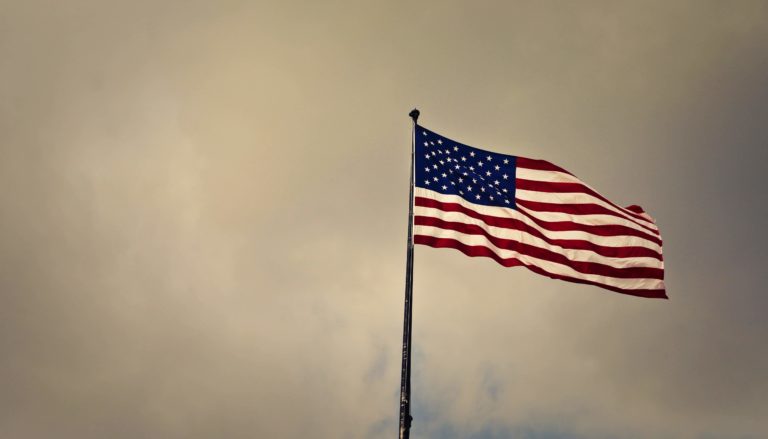How Are Gulf War Illness and Burn Pit Claims Different?

CCK Law: Our Vital Role in Veterans Law
Although the presumptive period for Persian Gulf War claims overlaps in part with the time period in which burn pits were used in the Southwest Asia theater of operations, claims for Gulf War Illness and conditions due to burn pit exposure are not the same. So, how are they different?
What Are Gulf War Illness Claims?
Claims for Gulf War Illness are considered under the VA’s Persian Gulf War (PGW) regulation that recognizes certain conditions, or types of conditions, as due to environmental exposures in the Persian Gulf as of August 2, 1990.
Under VA’s regulation 38 C.F.R. 3.317, Gulf War service requires active duty service in theatre any time after August 2, 1990 and extends to December 31, 2026. Per the regulation, service “in theatre” includes the following countries:
- Iraq
- Kuwait
- Saudi Arabia
- Neutral zone between Iraq and Saudi Arabia
- Bahrain
- Qatar
- The United Arab Emirates (U.A.E.)
- Oman
- Gulf of Aden
- Gulf of Oman
- Waters of the Persian Gulf, the Arabian Sea, and the Red Sea
- The airspace above these areas
The VA’s regulation only considers service in Afghanistan for certain presumptive infectious diseases, not all.
What Conditions Are Presumptive For PGW Service?
“Gulf War Illness” or “Gulf War Syndrome” are terms created as a way of labeling a veteran’s otherwise unexplainable symptoms. The VA states that in order to be eligible for compensation under the PGW regulation, a veteran must have a “qualifying undiagnosed illness or diagnosable chronic disabling patterns.” These conditions are commonly referred to as undiagnosed illnesses and/or medical unexplained chronic multi-symptom illnesses (MUCMI). MUCMIs are clusters of unexplained chronic symptoms such as joint pain, fatigue, indigestion, insomnia, headaches, memory problems, dizziness, and respiratory disorders. To fall under these criteria, there must be no other cause for the veteran’s disability or illness and the disability must have existed for at least 6 months.
Examples of undiagnosed illnesses and MUCMIs include the following:
- Abnormal weight loss
- Fatigue
- Cardiovascular disease
- Muscle and joint pain
- Headache
- Menstrual disorders
- Neurological and psychological problems
- Skin problems
- Respiratory disorders
- Sleep disorders
Additionally, the VA lists Chronic Fatigue Syndrome (CFS), Fibromyalgia, and functional gastrointestinal disorders such as Irritable Bowel Syndrome (IBS) and functional dyspepsia as presumptive for PGW service.
What Are Burn Pit Claims?
During the post-9/11 era, burn pits were used on U.S. military bases in Iraq, Afghanistan, and Djibouti as a means of waste disposal for materials used on the base. Materials such as plastic, metals, ammunition, medical waste, and human waste were burned in the pits, releasing toxic chemicals and inhalants into the air.
The main difference between claims for Gulf War Illness and claims for burn pit conditions is that burn pit claims are limited to veterans with service in Iraq, Afghanistan, and Djibouti, and only after September 11, 2001. This time period covers Operation Iraqi Freedom (OIF) and Operation Enduring Freedom (OEF) veterans. VA does not have a presumptive list for conditions stemming from exposure to burn pits during service, aside from chronic asthma, rhinitis, and sinusitis due to particulate matter exposure. This means most veterans must provide a medical “nexus,” a link between their condition and their exposure to burn pits in order to obtain service connection.
What Conditions Are Associated with Burn Pit Exposure?
Although there is no VA comprehensive presumptive list for conditions stemming from exposure to burn pits, the following conditions have been linked to burn pit exposure:
- Acute and subacute peripheral neuropathy
- AL Amyloidosis
- Asthma
- Autoimmune Disorders
- Bladder Cancer
- Bone Cancer
- Chloracne
- Chronic B-Cell Leukemias
- Chronic Inflammatory Demyelinating Polyneuropathy (CIDP)
- Constrictive Bronchiolitis
- COPD
- Diabetes Mellitus Type 2
- Glioblastoma Multiform, and other brain cancers
- Hodgkin’s Disease
- Hypertension
- Intestinal Cancers
- Ischemic Heart Disease
- Kidney Cancer
- Leukemia
- Lung Cancer, and other respiratory cancers such as pharynx, larynx, etc.
- Lupus
- Lymphomas
- Multiple Myeloma
- Myelodysplasia
- Non-Hodgkin’s Lymphoma
- Non-Ischemic Cardiomyopathy
- Parkinson’s Disease, Parkinson’s-like syndromes, including Parkinsonism
- Peripheral Vascular Disease
- Poryphyria Cutanea Tarda
- Prostate Cancer
- Soft Tissue Sarcoma
- Stroke
- Tonsil Cancer
So, How Are They Different?
There are several key differences between claims for Gulf War Illness and claims for burn pit-related conditions.
The Types of Conditions
The types of conditions that fall under the presumptive rule for PGW service and the types of conditions associated with burn pit exposure are different. The VA’s PGW presumptive rule mostly includes conditions that have a cluster symptom pattern or are generally seen as symptoms of a condition, although no underlying condition can be identified. Conditions related to burn pit exposure range from different types of cancers to respiratory conditions to autoimmune disorders.
The Time Frame
The VA’s PGW presumptive rule covers active duty service from August 2, 1990 to December 31, 2025, meaning that we are still within the presumptive period. This period covers PGW 1 and service in the Southwest Asia theater of operations after September 11, 2001. Veterans of Operation Desert Storm and Operation Desert Shield, as well as veterans of Operation Iraqi Freedom (OIF) fall under the PGW presumptive period. Burn pits were only used in Iraq, Afghanistan, and Djibouti after September 11, 2001. Unlike the PGW time period, burn pits mostly only impacted OIF/OEF veterans.
The Places
The VA’s PGW presumptive rule covers a number of countries in the Persian Gulf region, the waters surrounding those countries, and the airspace above them. However, the PGW presumptive rule does not include Afghanistan for the undiagnosed illnesses or MUCMI conditions.
Only Iraq, Afghanistan, and Djibouti are known to have had burn pits following September 11, 2001. Burn pits are not recognized as being used in any other of the countries in the Southwest Asia theater of operations.
Can these types of claim overlap?
It is possible for a veteran’s disability claim to be considered under both of these provisions. For example, a veteran of Operation Desert Storm would have qualifying service for a PGW claim. A veteran of Operations Desert Storm AND Iraqi Freedom would have qualifying service for both PGW claims and burn pit-related claims. However, a veteran of Operation Enduring Freedom with service in Afghanistan would not have qualifying service under the PGW regulation.
About the Author
Share this Post
